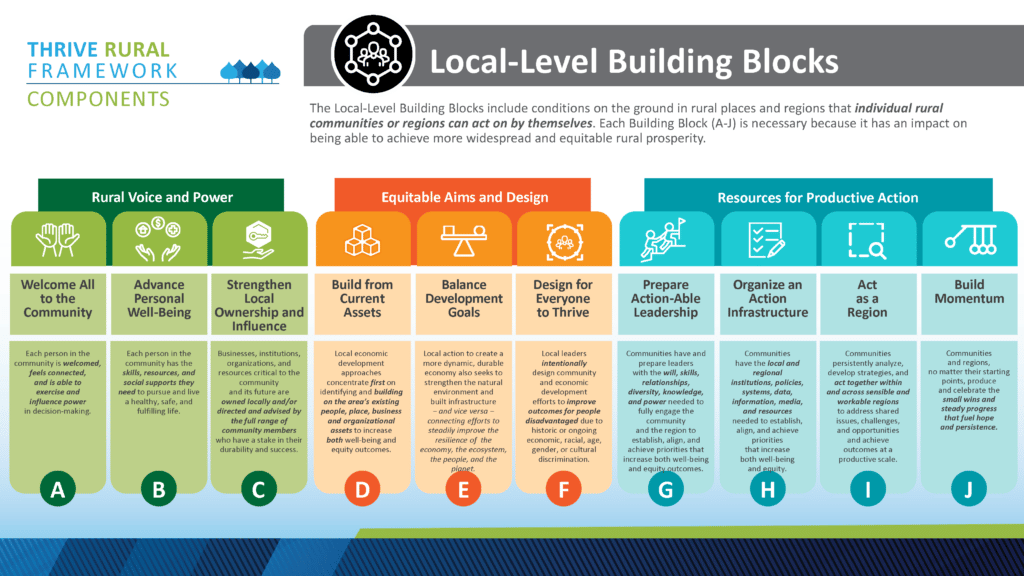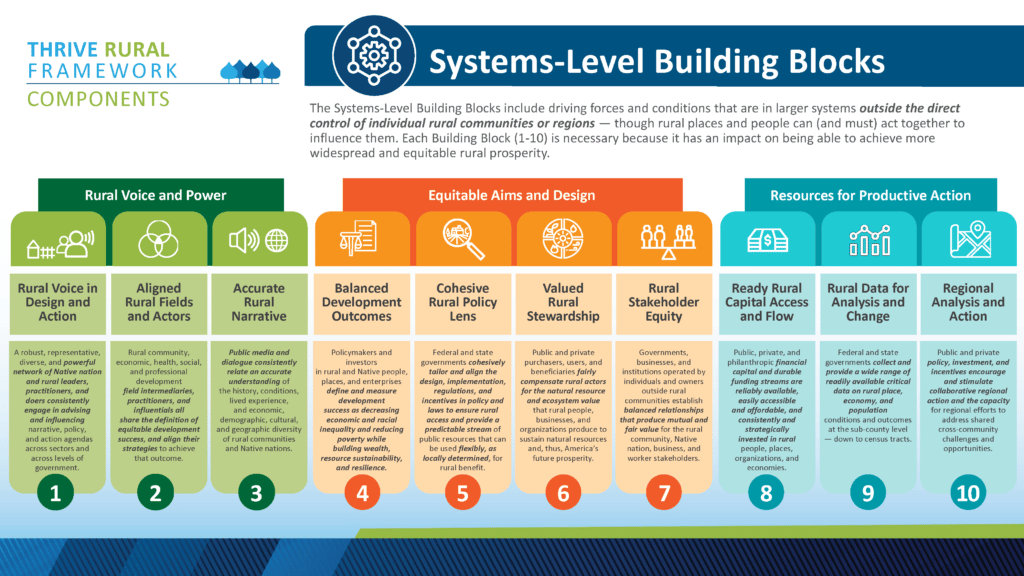To spark new ways of thinking, the Thrive Rural Framework is designed to be looked at in many ways. At its core, the framework identifies building blocks for equitable prosperity at the local and systems levels.
Each building block is meant to spark conversation and support assessment of the design and outcomes of policies and programs. There are common elements or groups of thematically linked building blocks that are present at both levels (rural voice and power, equitable aims and design, and resources for productive action).
Our unique approach
Many useful and important frameworks have historically sought to organize and name specific supports and resources that individuals and families need to survive and thrive. For example:
- Housing, transportation, healthy environment
- Food, health care, dependent care
- Education, training, work, connectivity
The Thrive Rural Framework instead gives insight into what communities and systems need to help produce those specific supports and resources, including:
- Shared thinking and goals
- People and leadership readiness
- Ability to understand and act together
The Thrive Rural Framework organizes building blocks into two levels: Local-Level and Systems-Level.

Local-Level Building Blocks focus on conditions on the ground in rural places that individual communities or regions can work on by themselves.

Systems-Level Building Blocks are elements that must be true but are outside the local community’s direct control.
These building blocks focus on conditions that can only be changed through regional and national cooperation, though communities can (and must) act together to influence them. Systems-level building blocks promote advocacy and collaboration by involving stakeholders inside and outside individual communities.
The framework is designed to be a living tool, so please share your insights about things that are missing or ways it should change.
